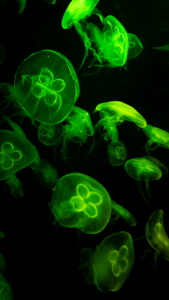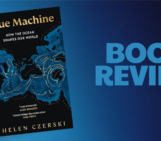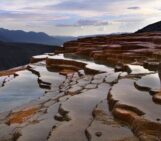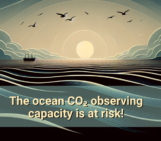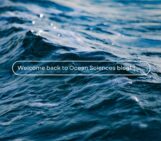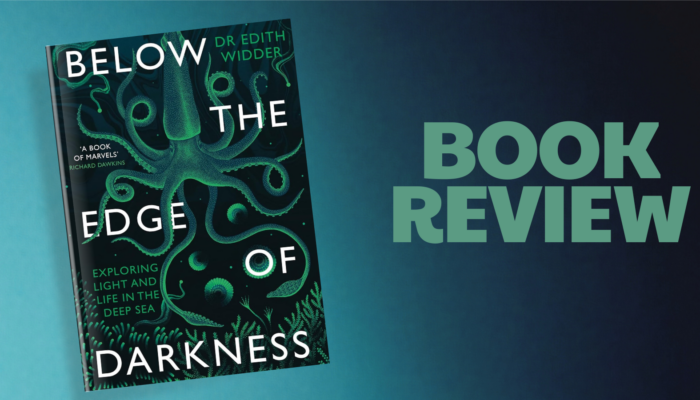
Career path
The book opens with Widder’s medical crisis: a severe accident leaves her temporarily blind, but as a by-product, it sparks a fascination with light and its importance.
Environmentalist Rachel Carson once said, “One way to open your eyes to unnoticed beauty is to ask yourself, What if I had never seen this before? What if I knew I would never see it again?” An even better way to achieve heightened visual awareness is to lose sight and then regain it.
As the story unfolds, we follow Widder on her journey to becoming a marine biologist. Widder shares her career path and explains her choices, shaped by diverse interests like marine biology, premed, electrical engineering, neurobiology, instrumentation, and biochemistry. Despite this (and sometimes also the challenges of sexism in male-dominated fields), she always comes back to her childhood dream. Her story shows that even brilliant scientists often do not start with a set straight path but rely on multiple backup plans.
We follow Widder on the rollercoaster of her personal life and career as she tries out various fields (earning a bachelor’s in Biology, a master’s in Biochemistry, and a PhD in Neurobiology). Along the way, she marries her husband and falls in love with the electrophysiology of bioluminescent dinoflagellates.
Deep-sea exploration
Driven by the goal to observe deep-sea creatures unobtrusively and learn more about bioluminescence, she asks simple yet profound questions like “How do deep-sea creatures behave when we are not looking?” or “Why do some deep-sea creatures have big eyes?” or “Can we communicate with them via light?”.
What world within our world might be revealed to us in the vast reaches of the dark ocean if we can simply learn to explore it without scaring life away?
It was a conversation with light. I had no idea what I was saying, but I think it was something sexy, because the response bore a striking resemblance to the sexual displays of sea fireflies.
The core of the book describes her exciting research expeditions, where we follow advancements in deep-sea diving and ocean exploration over time. For instance, the “Wasp” deep-sea diving suit allowed for the first-time observation of animal behaviors in their natural habitat, followed by the submersible “Deep Rover” and the first deep-sea webcam, Medusa. Widder used the Medusa, equipped with an e-jelly (an optical lure resembling a bioluminescent jellyfish), among other things during her time as a giant squid hunter to capture the first photographic and video evidence of a giant squid in its natural waters.
In Wasp you are always standing and, because the metal body sucks the heat out of you, frequently cold. Deep Rover, meanwhile, is more like an underwater helicopter, where you sit in a comfortable pilot’s seat in the center of a nearly invisible five-foot-diameter acrylic sphere with five-inch-thick walls that insulate you from the cold. Even better for our purposes, it did not rely on a tether, which meant that there was no martini-shaker effect. This made Deep Rover potentially the perfect platform for answering one of the biggest questions related to bioluminescence in the ocean: How much occurs when we’re not down there stirring things up?
Widder shares her groundbreaking discoveries from observing bioluminescent animals in the deep sea, discovering a new animal family (the glowing sucker octopus with suckers evolved into photophores for the deep-sea), recounting adventurous submersible dives (and accidents), collaborations with the military and documentary-filmmakers (e.g. in the hunt for the giant squid). She highlights the importance of science communication, the risks of miscommunication, and how it can damage the trust in science. While showcasing innovative approaches and great successes, Widder also addresses failure. She vividly explains the science behind bioluminescence and the advancement in deep-sea exploration in a simple and engaging way.
Underwater world description
Widder’s descriptive language brings the magical underwater world to life, reminding us of scenes from Alice in Wonderland or Avatar. Her vivid descriptions of her deep-sea expeditions make readers feel like they’re watching a movie, especially during dangerous submersible dives or giant squid hunts. Her writing style, a mix of scientific explanation – not dry at all but beautifully descriptive – and personal narrative, may take some getting used to in the beginning (the same goes for readers accustomed to the metric system), but it’s well worth it. Throughout the book, her humor shines through (especially in the footnotes), adding an extra layer of enjoyment.
I had blundered into an undersea garden straight out of the imagination of Dr. Seuss. Surrounded by enormous fans of rosy bubblegum coral, I was sitting right next to a giant yellow sponge shapes like a lacy, upside-down witch’s hat.
Anywhere we pointed our flashlights, we would see fragile filigrees of luff light up and then fade away. And if we used the camera strobe, the effect was even more remarkable, with whole galaxies of luminescence lashing back at us in unison from all around the sub.”
I highly recommend this book! It’s a must-read not just for marine biologists!
To end this post, here are some fascinating bioluminescent organisms, underwater regions, and ocean exploration equipment mentioned in the book worth googling:
-
-
- Stauroteuthus syrtensis (octopus with suckers evolved into light organs)
- Atolla Wyvillei (deep-sea jellyfish)
- Gulper eel (Eurypharynx pelecanoides) – (deep-sea eel with the light organ on the end of a very long tail and unfoldable head and jaw structure to increase mouth size)
- Brine Pool, Gulf of Mexico
- Medusa (camera capturing the giant squid) with e-jelly (optical lure resembling a bioluminescent deep-sea jellyfish)
- WASP (atmospheric diving suit)
More book recommendations:
- Atolla Wyvillei (deep-sea jellyfish)
- Stauroteuthus syrtensis (octopus with suckers evolved into light organs)
-

